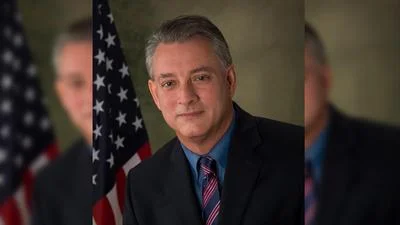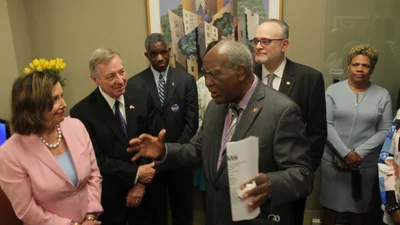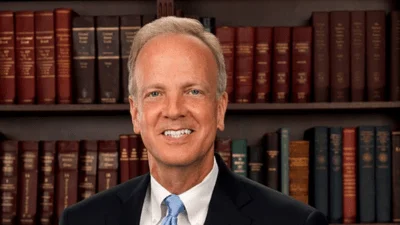“Mr. Chairman, thank you for calling this hearing.
“Today, nearly every working American and his/her family is protected against the devastating consequences of premature death, career-ending disability, and insufficient retirement savings. They’ve earned the protection. They paid for it. It’s called Social Security. The benefits…they are basic - nobody gets rich from Social Security - but they are reliable. And they are part of why America’s middle class grew so strong.
“Today we are beginning a series of hearings focused specifically on the Social Security Disability Insurance program, or ‘DI.’ I am glad we are. Because I believe in the program. It is vital. It provides irreplaceable economic security to those who have paid in but are no longer able to work through no fault of their own.
“At the same time, let’s be as honest as we are human: there is always room for improvement. And that, Mr. Chairman, is the operative word for these hearings: improvement! Are we here today, as representatives of those American workers, to strengthen Social Security’s DI program? To reinforce that ‘can do’ optimism flowing in our DNA? Or are we signaling retreat? Retreat from the protections. Retreat from the services and benefits Americans paid for.
Severely Disabled Workers Have Earned the Right to Receive Disability Benefits, and They Rely On Them
“Without Social Security, about half of Americans who receive its benefits would be living in poverty. This is particularly true for Americans who have become severely disabled, and who often have families to care for. I’m proud that our nation has established a system whereby workers can pay in during their working years, and can count on receiving insurance benefits should they become severely disabled, die, or retire. Remember, workers paid for their benefits - over its lifetime, Social Security has taken in $14.6 trillion and so far has only had to pay out to contributing Americans $12 trillion.
“Let’s be clear, it’s not easy to qualify for disability benefits - and rightly so. DI is only for people who have paid into the system. And it’s only available to those with the most severe impairments: Americans who are dying or who genuinely can’t earn a living wage and whose disabilities are disabling for at least a year. Applicants for DI benefits also have to show extensive medical documentation of their disability in order to qualify.
“When considering whether you can work, the Social Security Administration (“SSA") looks at whether you can do any job in the economy - even if it’s not your current profession or pays a lot less than your old job or requires you to move to a different city.
“As a result of this strict eligibility criteria, you won’t be surprised to learn that most people with illnesses or disabilities do not receive DI benefits - only the sickest people do. How sick? About one in seven Americans dies within a few years of becoming eligible for benefits. DI beneficiaries also tend to be older than the rest of the working population. That’s not a surprise. We all know that our health tends to get worse as we age, despite our best efforts at the gym.
“When I say DI provides a lifeline to ill and disabled workers and their families, I don’t mean the benefits are overly generous. The average disabled American getting Social Security benefits today receives less than $13,000 a year from the Social Security Trust Fund.
The Disability Program Grew Because Our Working Population Changed
“If you simply compare the number of people getting DI benefits 40 years ago to the number getting benefits today, it is larger. But that is a loaded way of looking at it. A lot has changed in the last four decades.
“For starters, women have entered the work force in large numbers. In 1975, there were about 37 million women in the workforce, while today there are 72 million. They are paying into the system, and should they become severely disabled, they qualify for benefits based on their contributions and earnings. Would anyone say that a woman who pays into Social Security and later receives DI benefits because she is severely disabled is a bad thing?
“Likewise, many Baby Boomers are at the age where they’re not yet eligible for retirement benefits. But, they are now much more likely to have a career-ending disability or illness. A 50-year old is roughly twice as likely as a 40-year old to be severely disabled. And a 60-year old is twice as likely to be disabled as the 50 year old. As much as we try to fight the aging process by exercising and eating lots of fruits and vegetables, we can’t stop nature.
“Economic factors also affect the program. Wage levels have risen in the last 40 years, as workers have become more productive and our economy has expanded. It means more money comes into the DI fund -- but it also means that benefits are higher, since DI is designed to keep up with improvements in wage levels and the overall standard of living.
“Many observers have also noted that, in an increasingly competitive and globalized economy, the nature of work may be changing in ways that could make it more difficult to work with certain kinds of severe impairments. Finally, as a result of the Great Recession, some people who held a job in spite of a very severe illness or disability lost their jobs - and have been unable to find other work in any field. Some of them apply for the DI benefits they are entitled to. Why would we want to take away the benefits that people have earned when the economy changes, and they aren’t able to earn a living due to illness or disability?
“Once these demographic changes are accounted for - a larger workforce, an older population, more working women - the rate at which newly-disabled workers begin receiving benefits today, compared to the working population, is below what it was in the mid-1970s. To reinforce this point, the most recent estimate of the Social Security Trustees projects that this rate will actually decline during this decade and level off after 2020. Why? The Baby Boomers are reaching retirement age and will shift to the retirement program.
SSA Needs the Tools to Be a Good Steward of the Disability Trust Fund
“Having said all of this, SSA needs to have enough people and technology to do a good job of managing the DI system. Unfortunately, today SSA is operating under a budget that this Congress cut imprudently. The result: the number of disabled Americans awaiting a decision from SSA on their application for earned benefits is again on the rise - despite previous years of progress in reducing the backlogs. Today, more than 1.5 million Americans are awaiting a decision on their application for benefits.
“We’ve heard heart-wrenching testimony at earlier hearings about the hardship and suffering caused by long delays in processing applications - some Americans have lost their homes, their families, and even their lives while waiting for the benefits they had earned. A Californian who worked in construction for over 30 years became homeless as he waited for his benefits. An Army veteran in Maryland became homeless and in dire need of medical care before her hearing was held. A gentleman in Texas had to file for bankruptcy during the six years it took before he received the benefits he had earned. A mother of two small children in Ohio nearly had her home foreclosed while she awaited her hearing.
“It is also essential to ensure that SSA is able to maintain program integrity. SSA needs to have sufficient resources to follow through on reviews of beneficiaries’ continuing eligibility, to make sure that people whose health improves enough to return to work no longer receive benefits.
Providing Income Support to the Most-Disabled Americans is Just a Small Part of What We Should be Doing to Help the Larger Population of People with Disabilities
“Over the years, we have built a vital infrastructure to make sure that people with disabilities can work if they’re able. This means access to public education, vocational rehabilitation, transportation and housing. The Americans with Disabilities Act is there to make sure that people with disabilities have access to the workplace, including legal protections to make sure disabled workers are not discriminated against. And the Affordable Care Act, last year’s historic healthcare reform, is a major step forward in guaranteeing health care for all Americans, including those with disabilities.
“At the same time, for the smaller share of disabled Americans whose cancer, traumatic brain injury, or arthritis is so severe that they cannot work, we have Social Security disability benefits - benefits workers can pay for while working and count on when they can’t work.
“We should continue to improve all of these efforts to support work among disabled Americans. But we must also carefully protect earned DI benefits so that American workers who are fully incapacitated get the benefits they earned and that they need to care for themselves and their families.
“Mr. Chairman, for more than 75 years, Social Security has improved the lives of retired, disabled and surviving family members of American workers. The Disability Insurance program is a vital part of Social Security’s success. That’s why I repeat that ‘IMPROVEMENT’ is the operative word for today’s hearing."









